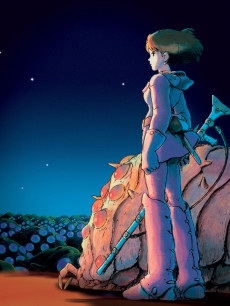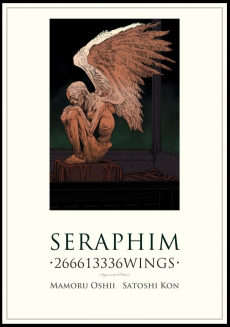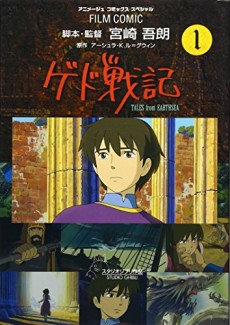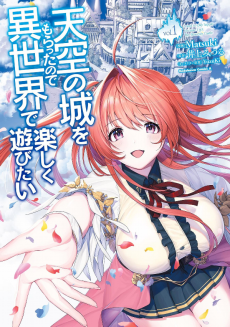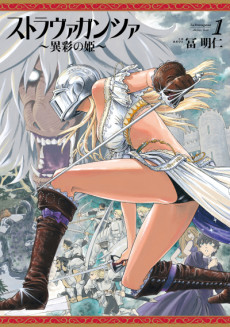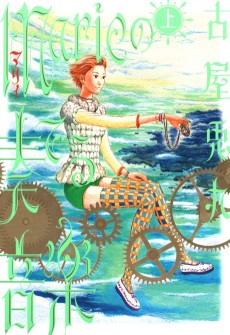KAZE NO TANI NO NAUSICAÄ
STATUS
COMPLETE
VOLUMES
7
RELEASE
March 1, 1994
CHAPTERS
59
DESCRIPTION
Humanity, in its hubris, has precipitated a devastating environmental disaster. Flourishing industrial civilizations have been swallowed up by the Sea of Corruption, an enormous forest of fungi releases a miasma of poisonous spores into the air. Nausicaa, a compassionate young princess, and her allies battle to heal a wounded world and its inhabitants...
(Source: Viz Media)
Note: Won the 26th Seiun Award for Best Comic (1995).
CAST
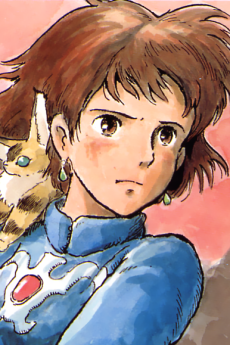
Nausicaä
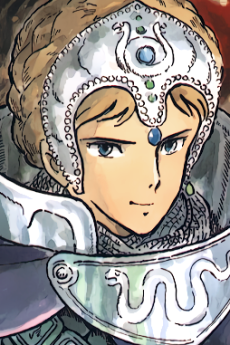
Kushana

Yupa
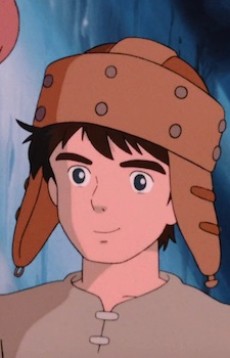
Asbel

Miralupa

Namulis

Charuka

Ketcha
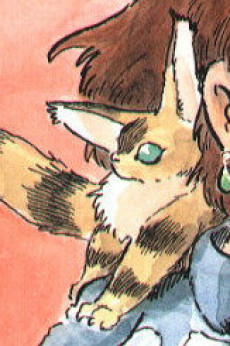
Toeto
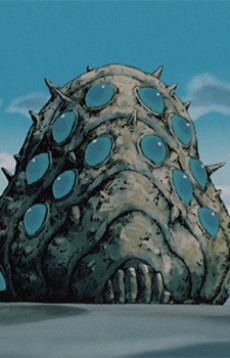
Oomu

Mito

Kurotowa
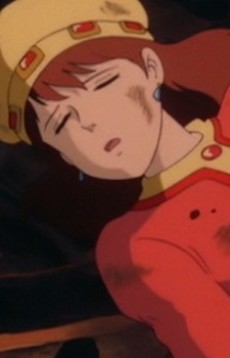
Lastelle

Selm

Holy One of Mani

Chikuku

King Vai

Guardian of the Garden
CHAPTERS
RELATED TO KAZE NO TANI NO NAUSICAÄ
REVIEWS

Krankastel
90/100Hayao Miyazaki's magnum opus; an epic with peerless ideas, radiating majesty.Continue on AniListThere might be no bigger challenge in a review than properly conveying impressions on works I cherish as masterpieces, all while clearly stating elements that might persuade or dissuade other people.
Nonetheless, I finally proceed with Nausicaä. Two points before we get started:
1.) First, it’s neither easily digestible nor your typical manga, for it is highly complex and brimming with ideas, as well as too packed with dialogues.
2.) Second, it’s Hayao Miyazaki on his most unfettered. Not a single sample of his lifework conveys everything he stands for more vividly.
__[1. Beginning with the story…]__ The greatest of the mind is determined by the depth of its suffering. – Nausicaä.
Worldbuilding is the most important element of a good fantasy setting, for it not only provides the story with a framework to develop on, but also keeps the audience invested and immersed to its unique workings.
I occasionally have an issue that also extends to sci-fi: the setting is not truly interactable and a prominent player of the narrative. It devolves to framework and eyecandy. Nausicaä is not such a work. Its environment’s role is omnipresent and on top of that, the setting is not your typical apocalyptic; unlike ones that feature ecological collapse, life is abundant yet humans and most other fauna are threatened with extinction by the toxic environment of the so called Sea of Corruption.

Concerning its “human geography”, the Torumekian Empire and the Dorok Principalities are the prominent geopolitical players, with lesser chiefdoms known as the Autonomous States of the Periphery being involved into a global scale conflict, as tributary states of the Torumekian Empire. The protagonist is born and raised into one such state, as the chieftain’s daughter and obliged to join the Torumekian army, thus her adventure begins.
During the conflict, war is portrayed at its most brutal; belligerent nations are engaged in total war, unrestricted in either the weapons used or the tactics employed. Biological warfare and scorched earth tactics are but a few blatant atrocities of this conflict, and there is no apparent resolution, other than total annihilation of one side.
While the big picture of the conflict and the looming apocalypse is being presented, Miyazaki is also laying foundations towards an alternative resolution while simultaneously expressing multiple concerns. This is achieved by successfully interweaving broad ideas drawn from social science, humanities and natural science with personal journeys.
No easy solutions are offered throughout the narrative, many questions are left unanswered and also, it’s necessary to view the work from multiple angles to grasp a bigger picture.
More are noted on sections [2.] and [3.], where the subjects and characters are described.
__[2. Continuing with subjects and a parallel…]__ People often contrast depth with broadness as if they are mutually exclusive qualities, but in reality they are complementary. This shows in Nausicaä, its narrative being a vast yet deep ocean composed of miniature seas.
a.) Bioethics strongly influenced Nausicaä’s writing, for the presence of conflicting attitudes towards manipulation of life is persisting throughout the story. And of course, influence from environmental science is omnipresent in its unique setting, connected with ideas drawn from fields such as cultural anthropology, philosophy and religion (e.g. Christianity and Buddhism).
Apart from that, influence from linguistics also left its mark. As a languages’ enthusiast I was more than pleasantly surprised when Miyazaki depicted language barriers (e.g. Dorok language being mutually unintelligible with Torumekian), and only select characters being presented as bilingual.
b.) Interjecting with a parallel, for I believe the historical period should be considered. Nausicaä was written throughout (later phases of) the Cold War period, whose influence shows; the conflict draws parallels with the hypothesis of a total war between the NATO and the Soviet Union escalating into nuclear war, and guarantying a nuclear holocaust. And this observation might be far-fetched, but the Dorok nation is composed of 51 principalities, calling to mind the United States’ 50 states and one federal state.
Of course, given the means warfare is conducted, concerning tactics parallels might be made to earlier phases of World War I (presence of cavalry and aircraft, entrenched positions, importance of artillery, extensive use of biological/chemical warfare).
c.) Psychological elements are also prominent; the importance of empathy and compassion especially (but also the limitations of these powers), as is the value of introspection and facing our “shadow”, not only in order to cultivate a deeper understanding of ourselves, but also in order to leave a lasting positive impact on the world. More are noted on section [3.].
Society is connected with nature, and likewise the big picture with the human condition. However, characters are not treated as mouthpieces, but as the next essential element in uniting the multiple miniature seas into a wide yet deep ocean.
__[3. And so we proceed with the characters…]__ In this world of ours, the sparrow must live like a hawk if he is to fly at all. – Yupa.
a.) Nausicaä: the protagonist of the namesake epic, she combines compassion and a strong personality with true character flaws and development to make for a complex individual with messianic traits, yet without ever appearing as insufferably pure.
She proves herself early on as an intelligent and independent young woman, who is deeply attuned with nature and other people, and will not tolerate injustice. But also, she is characterized by a naïveté and immaturity fitting her inexperience with real world situations.

Throughout the journey, she has displayed unconditional love towards all life, enormous kindness and bravery and, but also recklessness and a rather underdeveloped self-image, evident of a still-growing young adult who struggles with coming to terms with crueler aspects of reality.
Nonetheless, she is increasingly forced to rise to the challenge of preventing the total extinction of mankind, by strengthening her resolve and achieving internal harmony. Her personal journey is one of self-discovery and resilience.
>Blood has not sullied, but cleansed you. – Yupa. b.) Kushana: she is the deuteragonist of this epic, and a foil to Nausicaä. She also combines a strong personality with true character flaws and development, and Miyazaki himself has described the princesses as “two sides of the same coin” but with Kushana suffering from “deep, physical wounds”.
Unlike Nausicaä who was raised in a loving environment, albeit one where she was the only among eleven siblings to survive into adulthood, Kushana grew at a toxic familial environment, likened to a “nest of vipers”.
In order to survive, prosper and fulfill her ambitions she has shown herself to be assertive, brave, calculating yet also very ruthless. In a way, she can be likened to a lioness: a mother to her soldiers and genuinely supportive of whomever earns her respect, but cold and dismissive of anyone outside her troops of the Third Army, who commit their fair share of atrocities.
Her personal journey is one of salvation and embracing a more empathetic outlook, and is by no mean an easier journey or one with simple answers.
Can’t they see that they’re just rushing down the path to self-destruction? – Nausicaä.
c.) Other characters: the rest of the cast is highly variable and helps in keeping the plot’s development constantly fluid. Some are less fleshed-out but serve their purpose of supporting the main characters, whereas others are written with more complexity and depth, providing the reader with a bigger picture on the world and ideas. By no means have I liked all (e.g. Asbel), but the cast includes many whose role I appreciated.
An example is Kurotawa. Of commoner upbringing, he is an attaché that serves as Kushana’s staff officer, and these two have an intriguing and entertaining dynamic, for he acts as a spy and agent of her father, but at the same time provides the reader with a more pragmatical if callous point of view, in juxtaposition with the more idealistic views of Nausicaä.
__[4. And concluding with the artwork section...]__ [+] One of my favorite aspects is the character designs. Characters look expressive and richly detailed, plus highly identifiable and not similar. Outside those, Miyazaki showed astonishing care behind imagining and meticulously depicting weaponry of all sorts, clothing, fauna, aircraft and other machinery, as well as the ecosystem within the Sea of Corruption.
Not limited to eye candy, they bring into life rich human and natural ecosystems, their inhabitants and workings never losing their organic and plot-relevant feel. Many scenes have poignant presentations, e.g. when portraying the atrocities of the battlefields, and inspired me intense emotions during the manga’s highlights.

[-] However, I’m obliged to be fair towards any future readers and point out aspects of artwork that might be considered as negatives.
Backgrounds can be hit-or-miss, sometimes drawn simply in contrast with key details, but sometimes they are overpacked. Panels are connected to this issue; pages are A4 size, but the panels themselves can be very small and overpacked with both details and dialogue, thus making it rather hard to discern everything. Occasionally, key details blend excessively with backgrounds and make for a chaotic and confusing mélange.
This issue though is mostly limited to earlier volumes, as by later ones Miyazaki’s artwork has evolved; otherwise overpacked scenes allowed me to better discern details, e.g. thanks to more proper use of shading.
__[5. Also sharing my personal impression...]__ Nausicaä is among the works I consider closer to perfection, and one that reached my core for a very specific reason. Simply put, it reaffirmed my love for the world, my studies and people in a period when I started to get increasingly empty, detached and overcritical, but also furthered my understanding and offered me with a new sea to dive in.
Hope you enjoyed my review! I also highly recommend reading "The Greatest Ekostory Ever Told: The Nausicaä Project", either after you complete the manga (if it's your first time) or while/during a re-read.

TheIkari
90/100Una simple reseña de uno de los mejores mangs que he podido leerContinue on AniListYa hace tiempo había visto la película de Nausicaa del valle del viento. Dándole el rewatch este año, admito que es una película destacable dentro del catálogo de Ghibli, como una película más seria y cruda que las demás, con un mensaje ambientalista y anti-guerra. Pero he de decir que esta película se queda corta con la gran Princesa Mononoke la cual considero una versión superior. Pero, ni siquiera Mononoke se compara a la magnificencia que es el manga, el cual en 59 capítulos desarrollo todos sus elementos de manera asombrosa.
En primera quisiera hablar de su mundo, que es uno de los más pulidos que he visto en cualquier aspecto, el mundo después de una catástrofe ecológica se encuentra en muy mal estado, en el que los humanos por su extrema industrialización terminaron provocando este escenario, y por consiguiente en la actual tierra se libra una guerra entre dos reinos para repartirse las tierras.
Junto a esto se presenta también una nueva especie de insectos y una zona ultra contaminada en la que los humanos no pueden vivir. Todo este mundo es puesto sobre la mesa y se explora en muchas cuestiones, tanto sociales, científicas e incluso religiosas; en este mundo existen diferentes países con diferentes culturas, religiones, idiomas, etc. Aunque todos tienen algo cosas en común, están hartos de la guerra por los severos daños que les ha producido; la representación de la guerra es algo que me gusta de este manga, la hace ver como algo horrible, pero no al punto de demonizarla en extremo, y a la vez las tácticas son bastante buenas, desde estrategias para ganar ventaja, al aprovechar el escenario, y hasta incluso la creación de arma biológicas al experimentar con los insectos y esporas de la zona contaminada, que a largo plazo afectará hasta a las personas que las usan.
En el manga, la religión y la fe es un aspecto recurrente, el cual es visto como un método para darles esperanza a la gente al punto del absurdo, ya que estas no tendrían problema de hasta morir por ellas, reflejado en los domadores y en uno de los pueblos de Durko y algunas persona de Tormenkia por la creencia de Miralupa, ya que con esta guerra, la gente está buscando un algo que les dé un motivo para seguir viviendo.
Algo que me pareció interesante un detalle muy destacable es el cómo indaga en el método de vida de los habitantes de este mundo al interactuar con la zona, desde los ropajes y armas que utilizan, los puntos de vista que tienen acerca de la zona y de los insectos.
Y hablando de eso, me fascino el tema del medio ambiente, un mundo que está en la mierda por culpa del ser humano, pero en vez de ver todo este escenario ambiental post-apocalíptico como un castigo divino, lo tiñe de un tono más gris, ya que al final cosas como la zona contaminada o el Daikaisho son solo procesos por los que pasa el planeta para autorregularse y sostenerse, pero que a la vez en este proceso se deberá sacrificar a millones de seres vivos, tanto insectos como animales para que este proceso se haga; haciendo que el tema ambiental no se sienta como un mero castigo moral, pero tampoco que el ser humano no obtendrá un castigo por sus acciones.
El uso del misterio es competente, ya que mientras la obra va progresando se van revelando varias cosas referentes a la zona o los reinos de manera progresiva por los constantes descubrimientos de los personajes, en donde formulan teorías y especulaciones para poco a poco llegar a la verdad del asunto.
Si han leído bien, siempre hablo del ser humano y su repercusión y punto de vista en su mundo, ya que nosotros fuimos los responsables de que el mundo quedase así; cosa que aprovecha el manga para hablar de nosotros, más específicamente de nuestra codicia y falta de conciencia, cosa reflejada en ambos reinos, tanto Durku y Tormekia sufren de esto, Durku por la experimentación y falta de respeto por la naturaleza, cosa que los llevó a varios problemas como a los habitantes del país, y las tierras de este, y Tormekia por la nobleza, a cual está constituida de una familia disfuncional que segada por su avaricia, están en una constante autodestrucción por el trono.
Pero no es que te pinten al ser humano como una raza horrible y unos monstruos sin compasión, ya que todos estos comportamientos son entendibles por el escenario apocalíptico ¿Quién no se volvería un avaricioso de mierda en un lugar en donde la esperanza de vida cada vez disminuye, falta de tierras y recursos, más el estar viviendo en una guerra. La obra hace ver al ser humano como un ser autodestructivo que ocupa comprenderse y unirse para afrontar el futuro
Ahora hablemos de los personajes, que he dejado de lado en todo el escrito. Nausicaa es un personaje que me encanta, es una persona que tiene una visión sobre su mundo, una personalidad bien definida y hasta ideales que defiende, he escuchado en algunas reseñas que ella es una mary sue, cosa que desmentiré. El principal argumento que usan estas personas es que ella le cae bien a todo el mundo, cosa que digo que es obvio que le caería bien a todo el mundo, ella es capaz de inspirar a cualquiera, dotarlo de convicción, es amable, gentil, carismática, y se ha sacrificado tanto por detener la guerra que es imposible que al pueblo no le caiga bien. También dicen que todo lo que he dicho también es razón de ser una mary sue, por ser una persona tan perfecta, cosa que me hace pensar si es que esta gente se ha terminado el manga, en primer lugar, no es como que ella sea un ángel, de hecho en los últimos tomos ella reflexiona si el ser humano merece vivir, con la aparición de la oscuridad devoradora
También no es como que ella sea capaz de salvar a todos, hay incluso gente que muere por ella, y veces en las que necesita ayuda de los demás para superar una adversidad. También apuntan a que ella es la elegida de la profecía, cosa que si bien si es, no es como que sea algo que le dé beneficie tanto, aparte de la telepatía, esta no tiene ninguna otra característica que le beneficie bastante. Nausicaa es un personaje sumamente completo, no solo por lo que dije antes sobre su personalidad y etapa de reflexión, sino que también por su punto de vista de la vida y los oms, ya que esta siente un gran aprecio por el medio ambiente y lo considera algo que se debe preservar, pero tristemente debe de aceptar el proceso del medio ambiente.
Kushana por otro lado en un principio se podría pensar que es la típica codiciosa, pero realmente es una persona que se preocupa por su reino, y honra la valentía y honor de sus soldados. A su vez esto es acompañado de una firme y fuerte personalidad junto a su inteligencia y su forma de dar convicción a sus soldados, resulta en una muy buena líder
Los demás personajes si bien son mucho más simplones, no significan que sean malos. El maestro Yupa es como el típico tropo de personaje anciano que utiliza su conocimiento y experiencia para ayudar a los más jóvenes, reflejado en Nausicaa. Asbel sufrió la desaparición de su pueblo por el ataque del ejército de Kushana, pero este debe aprender a dejar su venganza de lado, para cooperar en la guerra. Charuka desarrolla una relación de Nausicaa, en la que pasan de ser enemigos a aliados con objetivos en común, y a la vez este poco a poco va cuestionado su reino y creencias mientras más interactúa con Nausicaa. Kurotowa empieza siendo un avaro que solo utiliza a Kushana para su propósito, pero mientras más avanza la trama, este va cambiando, aprendiendo a relacionarse con los demás. Namulis y el rey de Tormekia si bien se les puede catalogar como unos tiranos, estos a través de sus métodos buscan la prosperidad de sus reinos a costa de todo.
La obra como podrán ver por todo el escrito, trata una infinidad de temas que siguen siendo trascendentes hasta el día de hoy, el respetar el medio ambiente, los horrores de la guerra, la avaricia, el avance tecnológico y como está afecta al planeta y por sobre todo, él como la raza humana en colaboración los unos con los otros, es capaz de prosperar pese a las adversidades. Estos temas pese a lo variados que son, estan conectados por la trama, cada uno teniendo su resolución en el final, y sirviendo cual engranajes para que los demás se exploren, y como he dicho antes, estos temas son tratados de una forma imparcial sin satanizar o victimizar un bando.
Ok, después de todo esto podrán intuir que esta obra es simplemente excelente, pero tiene una cosa que si bien no es algo malo, la limita, y eso es su final, más específicamente, la última viñeta, la cual nos presenta un cuadro de texto que nos explica que paso después de todo; si bien entiendo el punto de esto haciendo ver a la obra como una especie de leyenda, no me pareció la mejor forma de hacerlo, ya que no solo la historia termina de manera abrupta, sino que este cuadro es mera exposición.
Conclusion
Kaze no tani no Nausicaa es un manga completo en cualquier apartado, y sin lugar a dudas una de las mejores historia que he visto en ficción y una que fácilmente a escalado poco a poco entre mis favoritos, una obra sumamente recomendable no solo por su gran calidad narrativa y artística, sino que también por que llega a ser sumamente entretenida e inmersiva, es simplemente de ese tipo de historias que gustara no solo por lo buenas que son, sino por lo entretenidas que son también, y simplemente no tengo palabras para felicitar a Miyazaki por tal excelso trabajo
9/10

Haru19
100/100Nausicaä of the Valley of the Wind and the meaning of ArtContinue on AniListSince I first read it, I considered Nausicaä of the Valley of the Wind to be a totally different kind of experience compared to all the other stuff I read and watch daily, but I was never quite able to tell out why that was. Now that I just finished reading it all once again, after about 8 months, I feel I grew a little more conscious of that answer, so I’ll try to put it into words.
I'm not writing this to be a commentary on Nausicaä itself, rather, a discourse about how I personally perceive and evaluate art in its forms.
My first approach with Nausicaä of the Valley of the Wind was the 1984 movie. At that time, I had barely any experience with Ghibli movies and Hayao Miyazaki’s works, but I had already seen Princess Mononoke (which basically everyone told me to be the “polished version of Nausicaä”), however to me, Nausicaä of the Valley of the Wind was, and still is to this day, an overall much better experience.
To me, any artistic product holds a value in itself, and it has become very hard to talk about this concept in a world where artistic products are but merch produced by an industry which objective is to sell said product to their costumers. Being part of this world and community for many years now, I think that many people become accustomed to evaluate art (manga and anime, specifically in this case) with the same criteria the industry does, that is evaluating the “shape” and “content” of a product with the same esteem, if not considering the “shape” to be the most relevant one.
I recently saw a video about an anime series stating that “even if it tells nothing but it does entertain the public, it’s still a good product", and I see this argument being used in discussions on this topic pretty often, like how “something doesn’t need to be deep or have a big meaning behind it to be likeable”, and while I agree with this statement to some degree, this is something that is true if considering only the “industrial” aspect of the product, in my opinion.
The “shape” does not create “value”, it “adds” value to a product. The “content” of the product is what creates its “value”.
A godly-written and entertaining story that has nothing to tell or teach is worth nothing. Instead, a story maybe full of flaws, but still able to convey a meaning, is a great story, to me. Art in itself is the only mean a person has to express himself, art is indeed the purest expression of the self and it certainly was never about “shape” to begin with. A story is told because someone has something within himself that he wants to tell to others, that is to me the essence of art. And that is why a product empty of meaning will never be as valuable as one that relies on its meaning.
This is not to say, of course, that “shape” is worth nothing; without a shape the content cannot be conveyed, and thus cannot reach the “others”. But I can’t go as far as to say that the shape is then as important as the content is. To me, this is not true, as the “content” in itself is reason why art is born in the first place, and conveying it is the “end goal” of the artistic product. Prioritizing “shape”, sometimes ends up restricting the strength in which the “content” is conveyed, and this is the reason why I still prefer Nausicaä of the Valley of the Wind over Princess Mononoke.
This whole discourse reminds me of Hideaki Anno’s comment on the release of the manga “Mobile Suit Gundam: The Origin” he made in 2005, titled “Celebrating the Revival of Gundam as a Tale”, in which he stated:
“In recent years, the hollowing out of mainstream culture severely diluted and eroded the standing of the Tale. TV-type mass consumption laid the impoverished grounds of contemporary entertainment, giving rise to masses that can only respond with praise for superficial details and technical proficiency. That is why I am so glad that Gundam is showing us here a true Tale, through the medium of manga. I want as many people as possible to reconfirm and savor the essence and allure of Tales.”
To me, the manga Nausicaä of the Valley of the Wind accomplishes the achievement of telling a true Tale, one that relies completely on its meaning and that was born from the innate need of its author to tell something to others, something that will remain endlessly in time. That’s why it feels to me as a completely different experience, one that you cannot really stop learning from, and that is capable of shaping you as a person. I hope this aspect of art won’t be lost as the industry keeps exploiting artistic products for entertainment’s sake, but I do have a feeling that humans cannot live without art.
SIMILAR MANGAS YOU MAY LIKE
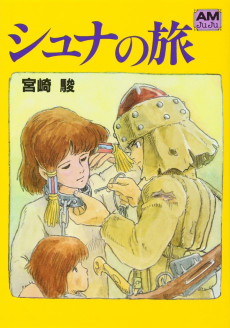 MANGA ActionShuna no Tabi
MANGA ActionShuna no Tabi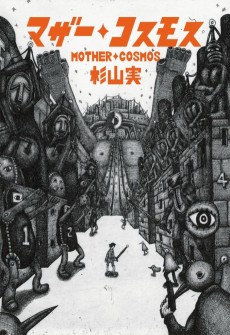 MANGA ActionMother Cosmos
MANGA ActionMother Cosmos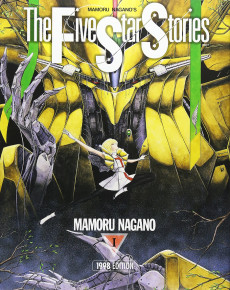 MANGA MechaFive Star Stories
MANGA MechaFive Star Stories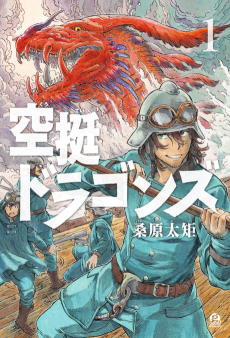 MANGA ActionKuutei Dragons
MANGA ActionKuutei Dragons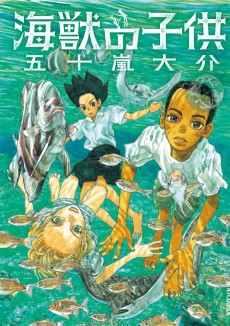 MANGA DramaKaijuu no Kodomo
MANGA DramaKaijuu no Kodomo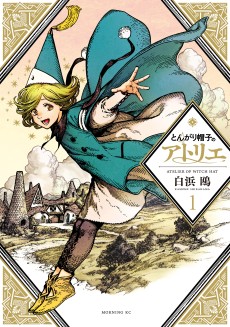 MANGA AdventureTongari Boushi no Atelier
MANGA AdventureTongari Boushi no Atelier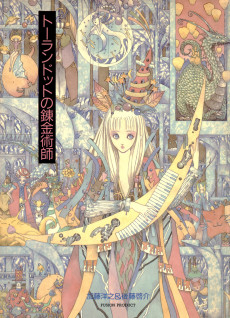 MANGA FantasyTurandot no Renkinjutsushi
MANGA FantasyTurandot no Renkinjutsushi
SCORE
- (4.25/5)
MORE INFO
Ended inMarch 1, 1994
Favorited by 1,163 Users


